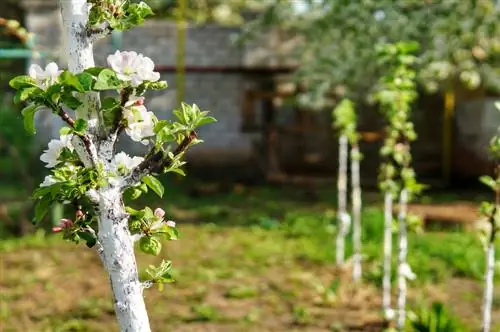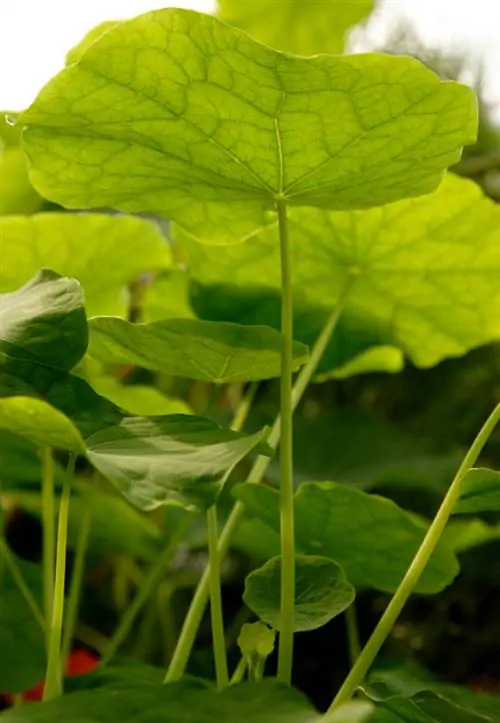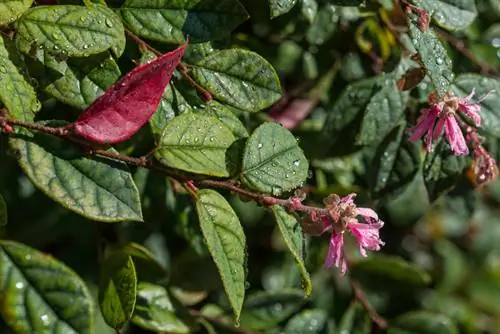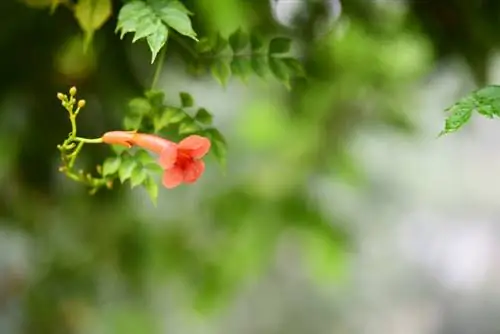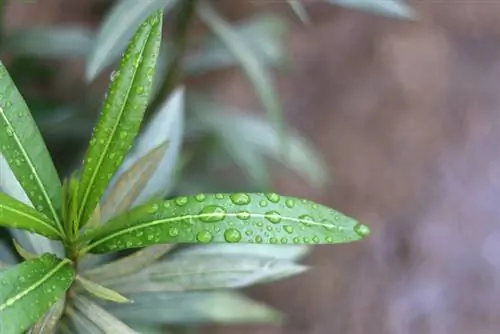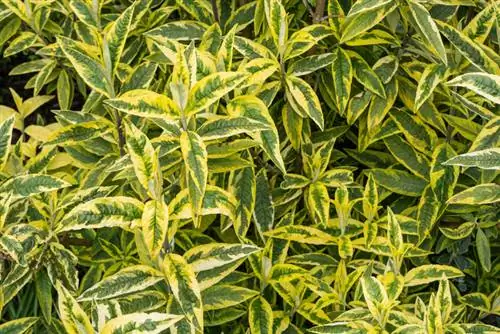- Author admin [email protected].
- Public 2023-12-16 16:46.
- Last modified 2025-01-23 11:21.
Anyone who plants an apple tree is already looking forward to the autumn harvest in spring. However, this is canceled if the tree does not want to bloom. There are various causes for this phenomenon, which we will briefly introduce to you here along with the countermeasures.
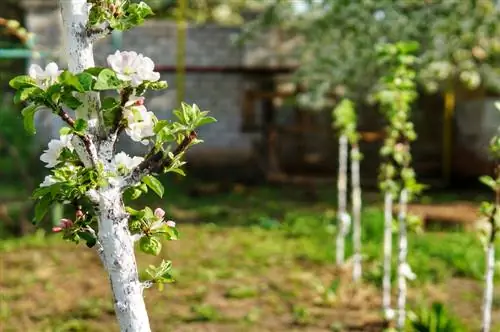
Why doesn't the columnar apple tree bloom and what can you do about it?
If a columnar apple tree does not bloom, it may be due to alternation, incorrect location, frost damage, incorrect pruning or inadequate water and nutrient supply. You can counteract this by choosing a suitable variety, choosing a location, little pruning, regular fertilization and sufficient irrigation.
Causes
In addition to the causes of flowerlessness presented here, there are others, such as waterlogging and the resulting root rot as well as other diseases as well as severe pest infestation. Another reason that should not be neglected can also be the age of the columnar apple: Many of these trees do not bloom immediately after planting, but only need one or several years to acclimatize, grow in the new location and even ripen.
Alternance
Many columnar apple tree varieties tend to alternate, which is why they do not bloom every year, but only every two or even three years. This behavior is completely normal and protects the tree from being overwhelmed. Typically, the flowers simply fail the following year after a particularly rich harvest.
Wrong location
A location that is too dark often results in a lack of flowering: Therefore, plant the columnar apple in a location with as much sun as possible and in loose, humus-rich soil.
Frost damage / pruning
Like all apple trees, the columnar apple produces the previous year's flowers during the previous year's fruit formation. For this reason, you should always thin out if there is a lot of fruit so as not to endanger the formation of flowers - otherwise the tree may simply not have any capacity left for it. Correct, not too extensive pruning also stimulates or prevents flower formation because too much has simply been cut away. In spring you should protect the tree from late frosts - for example with a garden fleece (€6.00 on Amazon) - otherwise the buds will freeze.
Inadequate supply of water/nutrients
Apple trees are extremely heavy feeders: In addition to humus-rich, permeable soil, they need a regular supply of fertilizers - preferably organic material such as compost - and a lot of water, especially during fruit formation. But be careful: an oversupply, especially of nitrogen, also leads to flower failure. This nutrient stimulates growth rather than flower formation.
Countermeasures
So that you can successfully enjoy the apple blossoms and harvest fruit every year, you should take these preventive measures:
- Choosing a variety that does not or only alternates a little bit
- Choose a suitable location: sunny and in loose, humus-rich soil
- cut little, especially thin out
- fertilize regularly
- water when dry
Tip
If the columnar apple tree produces flowers but no fruit, it is probably missing a suitable pollinator. As a rule, columnar apples are not self-pollinating and therefore require a second apple tree of a suitable variety.

